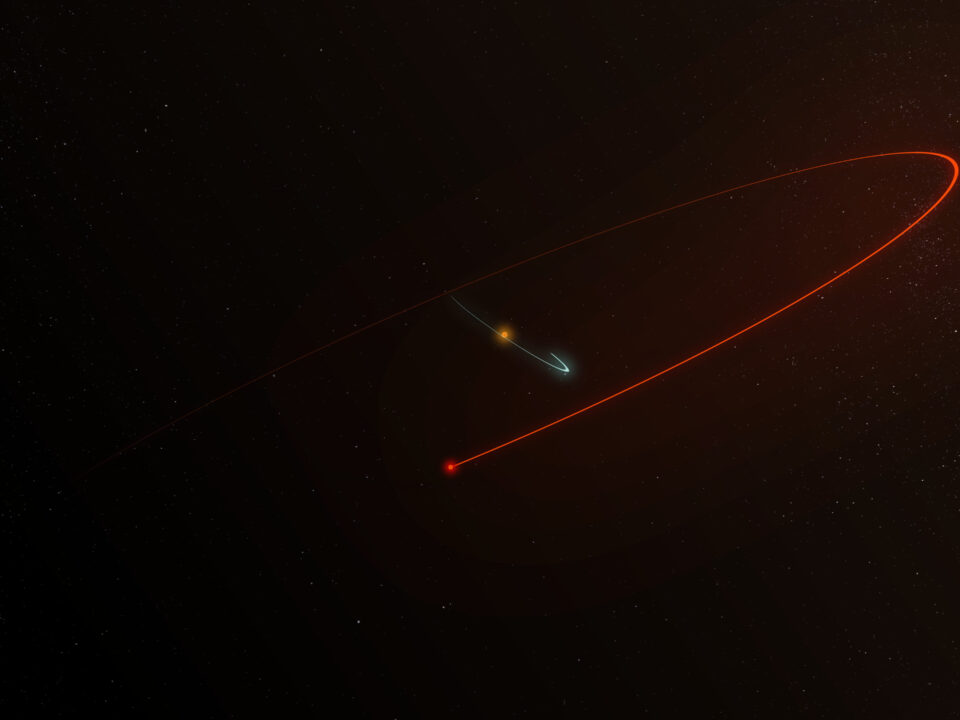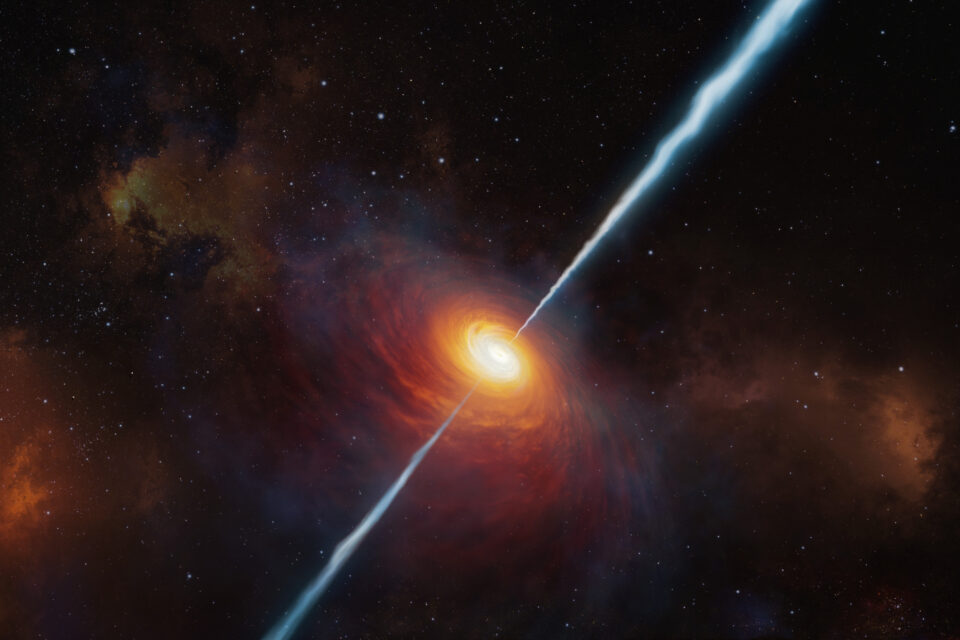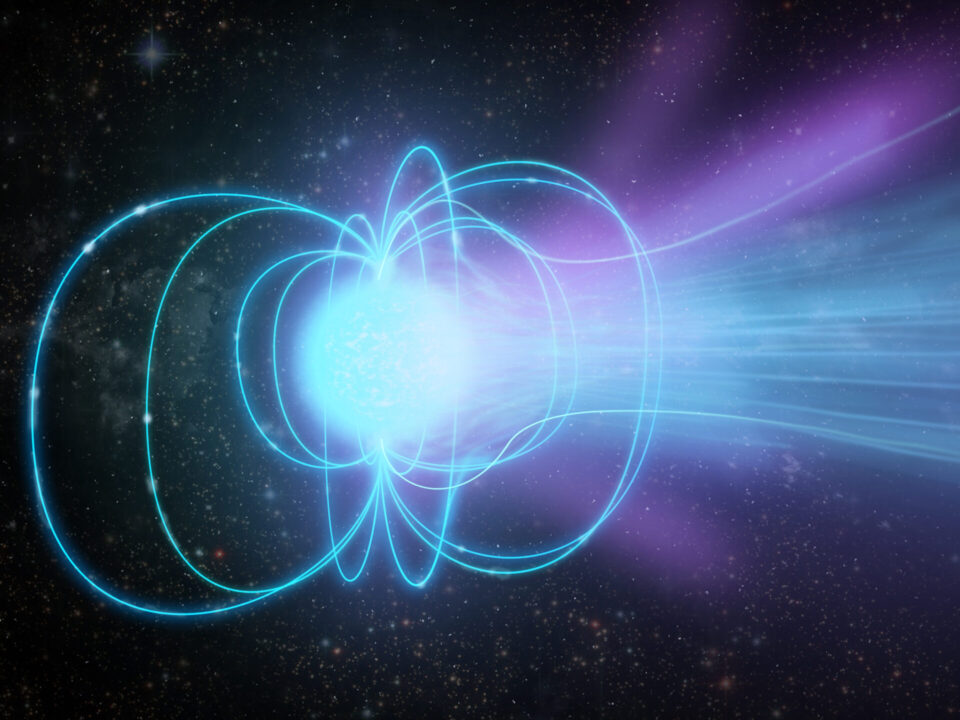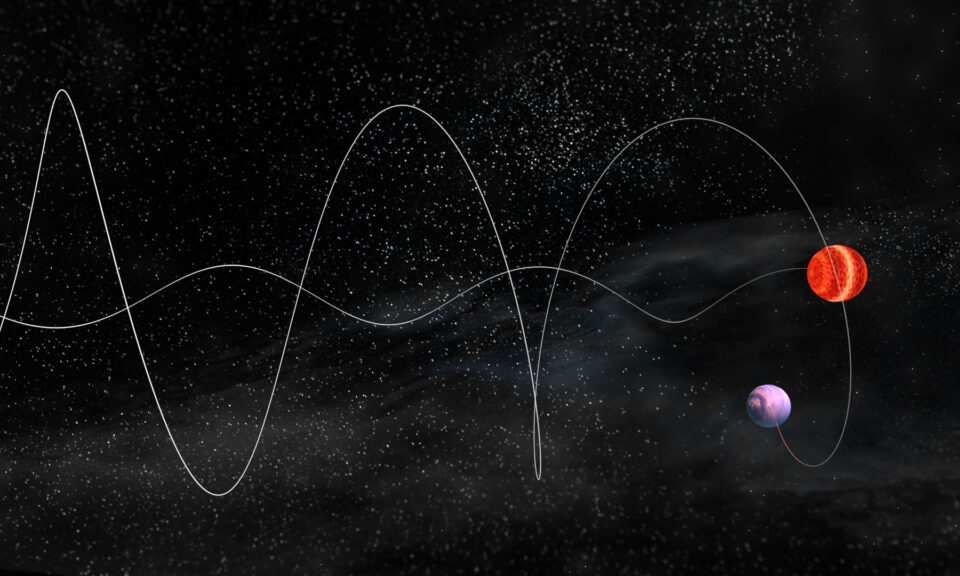VLBA
- Filter by
- Categories
- Tags
- Authors
- Show all
- All
- Andromeda Galaxy
- Betelgeuse
- Black Hole
- Black holes
- brown dwarfs
- Canada-France-Hawaii Telescope
- CFHT
- Chad Trujillo
- Comets
- coronavirus
- cover-19
- EAO
- Europa
- exoplanets
- Fred Lawrence Whipple Observatory
- Galaxies
- Gamma-ray burst
- Gemini Observatory
- Harvard University
- IfA
- International Gemini Observatory
- JCMT
- Keck Observatory
- Milky Way
- Moon
- NASA Infrared Telescope Facility
- Neptune
- NOIRLab
- NSF
- Quasar
- Quasars
- Saturn
- SMA
- Subaru Telescope
- Supercluster
- UH Institute for Astronomy
- UKIRT
- Uranus
- VLBA
October 19, 2022
October 19, 2022
Categories
Combining the signal from the VLBA dish on Maunakea with identical dishes across and beyond the continental US, astronomers have created the first ever three-dimensional view of the orbit of a Jupiter-like planet in a binary star system. Read more and see a video of the orbit, in the VLBA press release.
March 9, 2021
March 9, 2021
Categories
Two Maunakea Observatories have been used to reveal the most distant – and therefore the youngest – known radio beacon in the early Universe. Seen as it was 780 million years after the big bang, the object – a quasar known as P172+18 – was originally discovered in images from the Pan-STARRS telescope on Haleakalā, Maui. Detailed study with the […]
September 29, 2020
September 29, 2020
Categories
Astronomers using the Very Long Baseline Array (which includes an antenna on the slopes of Maunakea) have made the first measurement of the distance to a magnetar within our Milky Way Galaxy. Magnetars are a special type of neutron star, the superdense remains of massive stars that exploded as supernovae, with magnetic fields a trillion times stronger than those of […]
August 5, 2020
August 5, 2020
Categories
Astronomers have discovered a Saturn-sized planet closely orbiting a small, cool star 35 light-years from Earth using the Very Long Baseline Array. This unique telescope consists of an array of several antennas separated by as much as 5,000 miles (one of which is located on the slopes of Maunakea), and can provide extremely high precision measurements of a star’s position […]




